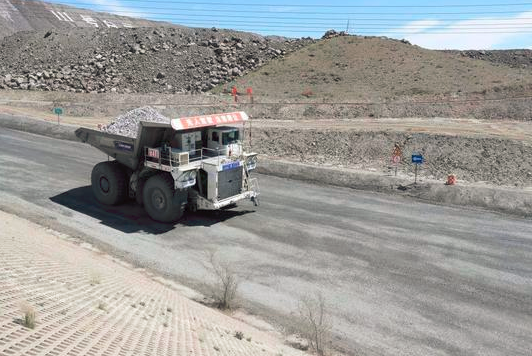Earlier this year a driverless mining truck was deployed in the Bayan Obo iron ore and rare earths mining area of northern China’s Inner Mongolia Autonomous Region according to reports on the Xinhua and China Plus. Measuring 6.8 m tall, the 5G network-based autonomous mining truck is a retrofitted North Hauler NTE brand truck with a payload capacity of 170 t so is thought to be the largest autonomous mining truck now running in China. The autonomous system was developed by the Baogang Group (Baotou Steel), the Inner Mongolia branch of China Mobile and Beijing-based Tage Idriver, a fast growing service provider in autonomous driving for open-pit mines – full company name Beijing Tage Zhixing Technology Co Ltd.
In response to Chinese government’s “Made in China 2025” plan, aiming at Chinese companies producing higher-value products and services and the implementation of a national “smart mine” development plan, closer cooperation between Tage Idriver and Baotou Steel Group has also been announced to jointly create a model project for unmanned open-pit mines. On September 29, 2019, the two sides officially signed a contract for the “Donovan Iron Mine Unmanned System Project.”
Separate from the Baogang work, Tage Idriver has signed a deal with Inner Mongolia Zhongli Xieli Mining Co Ltd for “unmanned driving systems and services in mining areas.” Tage Idriver will provide 200 sets of unmanned mining trucks and become the sole supplier of unmanned products to the miner. The two sides will jointly promote the mining vehicles based on the principle of “complementary advantages, resource sharing and common development.”
Back to the current work, and a total of four such unmanned mining trucks have been put into use in the Bayan Obo mining area, known as China’s Obo mining area, known as China’s “rare earth capital.” Rare earths are produced as a byproduct from the iron ore material. The proven rare earth reserves in the area have reached around 100 Mt, accounting for around 83% of the country’s total and 38% of the world’s total.
Equipped with technologies such as laser radar, millimetre-wave radar and 5G-V2X wireless communication, the new driverless trucks have various functions including remote control, precise parking and obstacle avoidance. The new trucks can improve the efficiency of mining cars under special circumstances and reduce operational risks.
The 5G base station equipment deployed by China Mobile and Chinese tech giant Huawei in the mining area provides faster, safer and more reliable information exchange for the trucks, thus enabling efficient monitoring, dispatching and management of mining vehicles, according to Zhang Yanghai, a staff member from the Inner Mongolia branch of China Mobile.
Compared with traditional mining trucks that use human drivers, autonomous vehicles are more efficient and cheaper to maintain. The Bayan Obo mining area plans to purchase more unmanned mining trucks and transform existing traditional vehicles, making over 65% of its mining trucks autonomous in the future.
Sun Guolong, General Manager of Baogang Group, said the application of 5G mobile communication and artificial intelligence (AI) is of great significance to the construction of the company’s smart mines. The group will make full use of the internet, robots, AI and other new technical means to realise intelligent mining.











